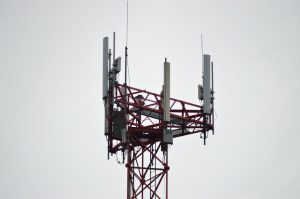The Future of Satellite Technology: Trends and Innovations

The Future of Satellite Technology: Trends and Innovations
The future of satellite technology: trends and innovations is an exciting and rapidly evolving field, with new advancements and innovations emerging all the time. The future of satellite technology holds much promise, with significant improvements in communication, navigation, and Earth observation. In this article, we will explore the current trends and innovations in satellite technology and what we can expect to see in the future.
Satellite technology has come a long way since the launch of the first artificial satellite, Sputnik, in 1957. Today, satellites play a crucial role in our daily lives, from providing navigation and communication services to monitoring the environment and predicting weather patterns. With the increasing demand for satellite-based services, the industry is experiencing rapid growth, with new companies and technologies emerging all the time.
Advancements in Launch Systems
One of the most significant trends in satellite technology is the development of new launch systems. Traditional launch systems are expensive and often require a significant amount of time and resources to launch a single satellite. However, with the emergence of private companies such as SpaceX and Blue Origin, the cost of launching satellites into space is decreasing, making it more accessible to a wider range of companies and organizations. Reusable launch systems, such as SpaceX’s Falcon 9, are also becoming more common, which is expected to significantly reduce the cost of launching satellites in the future.
Another area of innovation in launch systems is the development of small launch vehicles. These vehicles are designed to launch small satellites, known as CubeSats, into space. CubeSats are tiny satellites that are typically around the size of a shoebox and weigh less than 3 pounds. They are often used for research and development purposes and are becoming increasingly popular among universities and startups. Small launch vehicles, such as Rocket Lab’s Electron, are making it easier and more affordable to launch CubeSats into space.
Advancements in Satellite Design
Another area of innovation in satellite technology is the design of the satellites themselves. Traditional satellites are often large and complex, requiring significant amounts of power and resources to operate. However, with the emergence of new technologies, such as solar panels and advanced propulsion systems, satellites are becoming smaller, more efficient, and more cost-effective. For example, the development of electric propulsion systems is allowing satellites to operate for longer periods of time and to travel further distances.
Another trend in satellite design is the use of 3D printing. 3D printing is allowing companies to create complex satellite components, such as antennas and propulsion systems, more quickly and efficiently. This is reducing the time and cost associated with developing and launching satellites. For example, the company, Relativity Space, is using 3D printing to create entire rockets, including the satellite and launch vehicle.
Advancements in Data Analytics
Finally, another area of innovation in satellite technology is the use of data analytics. Satellites are generating vast amounts of data, from images of the Earth to weather patterns and navigation data. However, this data is often difficult to analyze and interpret, requiring significant amounts of time and resources. With the emergence of new data analytics technologies, such as machine learning and artificial intelligence, companies are able to analyze and interpret satellite data more quickly and efficiently.
For example, the company, Planet Labs, is using machine learning to analyze satellite images of the Earth. The company is able to use this data to monitor crop health, track deforestation, and predict weather patterns. This is just one example of how data analytics is being used to extract valuable insights from satellite data.
Conclusion
In conclusion, the future of satellite technology: trends and innovations is an exciting and rapidly evolving field, with new advancements and innovations emerging all the time. From advancements in launch systems and satellite design to the use of data analytics, the industry is experiencing significant growth and innovation. As the demand for satellite-based services continues to increase, we can expect to see even more exciting developments in the future.
The future of satellite technology holds much promise, with significant improvements in communication, navigation, and Earth observation. Whether you are a company looking to launch a satellite or an individual looking to use satellite-based services, the future of satellite technology is an exciting and rapidly evolving field that is worth paying attention to.





